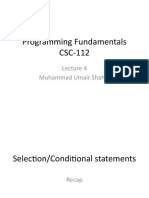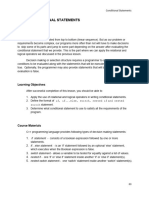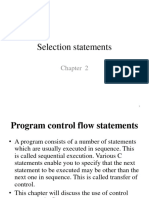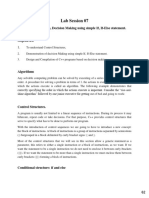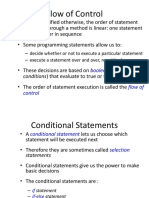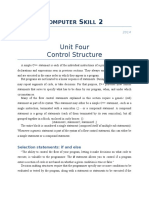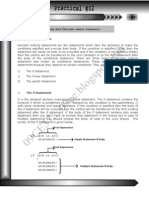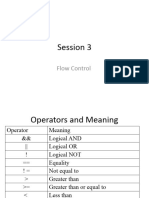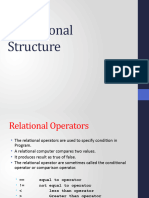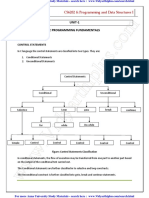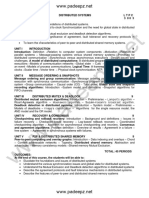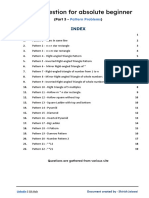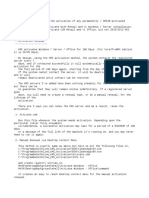100% found this document useful (1 vote)
32 views13 pagesUnit 3 Conditional Statements in C++
This document covers conditional statements in C++ including relational, logical, and selection structures such as if, if...else, else...if, and switch statements. It explains the use of relational operators for comparisons, logical operators for combining conditions, and provides examples of each statement type. Additionally, it discusses the order of precedence for operators in C++.
Uploaded by
Roman SaadatCopyright
© © All Rights Reserved
We take content rights seriously. If you suspect this is your content, claim it here.
Available Formats
Download as PDF, TXT or read online on Scribd
100% found this document useful (1 vote)
32 views13 pagesUnit 3 Conditional Statements in C++
This document covers conditional statements in C++ including relational, logical, and selection structures such as if, if...else, else...if, and switch statements. It explains the use of relational operators for comparisons, logical operators for combining conditions, and provides examples of each statement type. Additionally, it discusses the order of precedence for operators in C++.
Uploaded by
Roman SaadatCopyright
© © All Rights Reserved
We take content rights seriously. If you suspect this is your content, claim it here.
Available Formats
Download as PDF, TXT or read online on Scribd
/ 13


